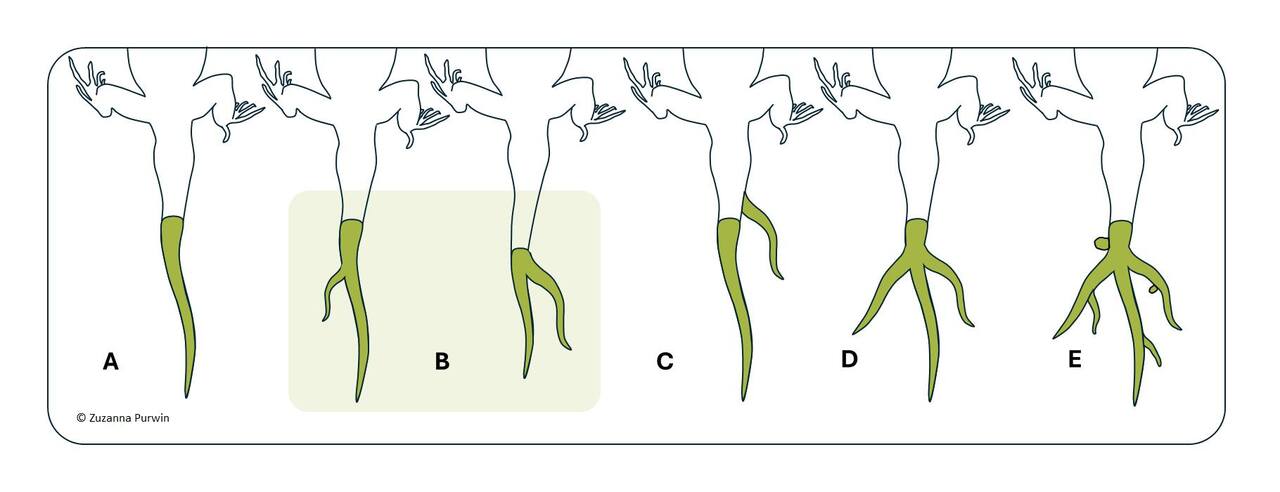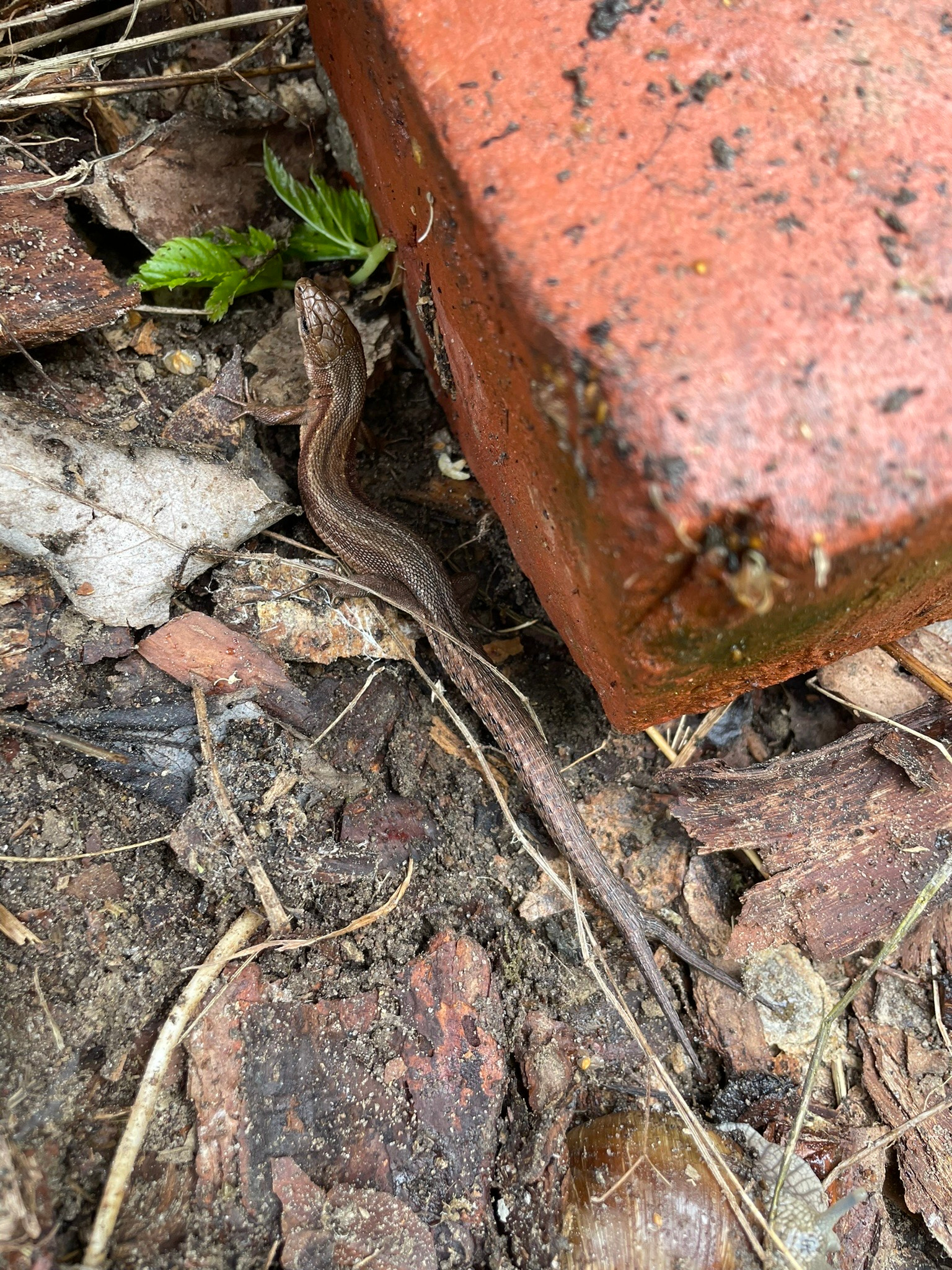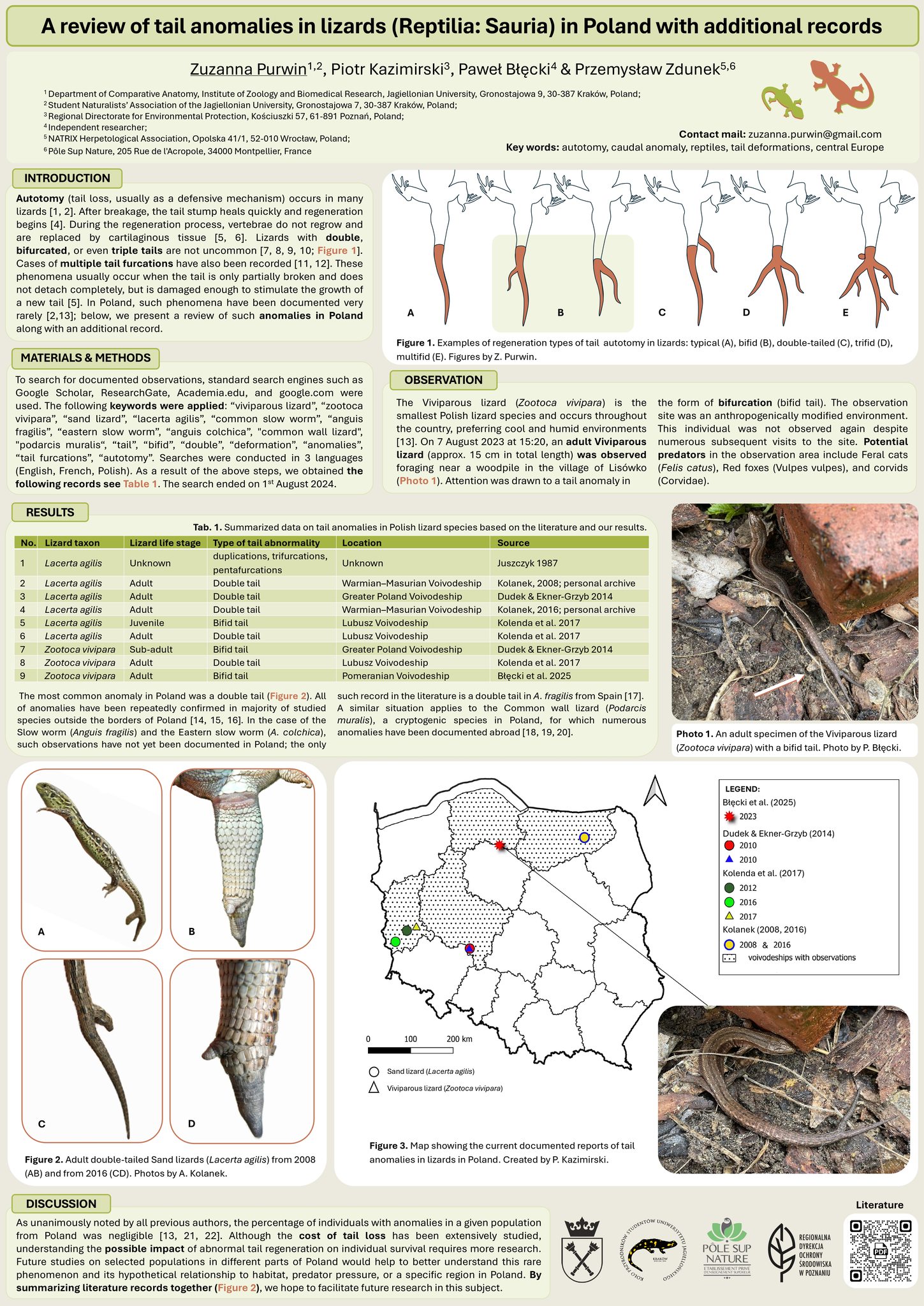A review of tail anomalies in lizards (Reptilia: Sauria) in Poland with additional records

Caudal autotomy is a self-amputation, in which an animal voluntarily loses its tail. It is a defense mechanism that results in the regrowth of the tail at the place of its loss. Once broken off from the caudal vertebra (in the “zone of weakness”), the tail stump heals quickly, and regeneration begins. This process occasionally results in malformation, after which a tail furcation appears as a split or multi-branched tail. In taxa exhibiting tail regeneration, a new tail may develop even when the original one is not entirely detached, leaving the animal with a seemingly forked tail, which is termed caudal bifurcation.

Here, I present a note on this subject, written by Paweł Błęcki, Piotr Kazimirski, and Przemysław Zdunek, which was published in Przegląd Przyrodniczy, Volume XXXVI, 2025, Issue No. 2. (https://www.researchgate.net/publication/395688386_Obserwacja_rozdwojenia_ogona_u_jaszczurki_zyworodnej_Zootoca_vivipara_Lichtenstein_1823_z_polnocnej_polski_na_tle_tego_typu_anomalii_u_polskich_jaszczurek_Reptilia_Sauria_-_Observation_of_tail_bifurca).
Then, Zuzanna Purwin, from Jagiellonian University, presented the above report, along with additional information and graphics, in the form of a poster at SEH 2025 - 23rd European Congress of Herpetology (SEH 2025) in Bonn. The topic concerned a review of this type of anomaly in lizards in Poland, together with a new observation by Paweł Błęcki.
Link poster in english: https://www.researchgate.net/publication/395458084_A_review_of_tail_anomalies_in_lizards_Reptilia_Sauria_in_Poland_with_additional_records

#autotomy #caudalanomaly #reptiles #taildeformations #centralEurope #tailanomalies #lizards #Reptilia #Sauria #Poland #herpetology #animals #lacerta #lacertaagilis #zootoca #zootocavivipara





Please sign in or register for FREE
If you are a registered user on WildHub, please sign in